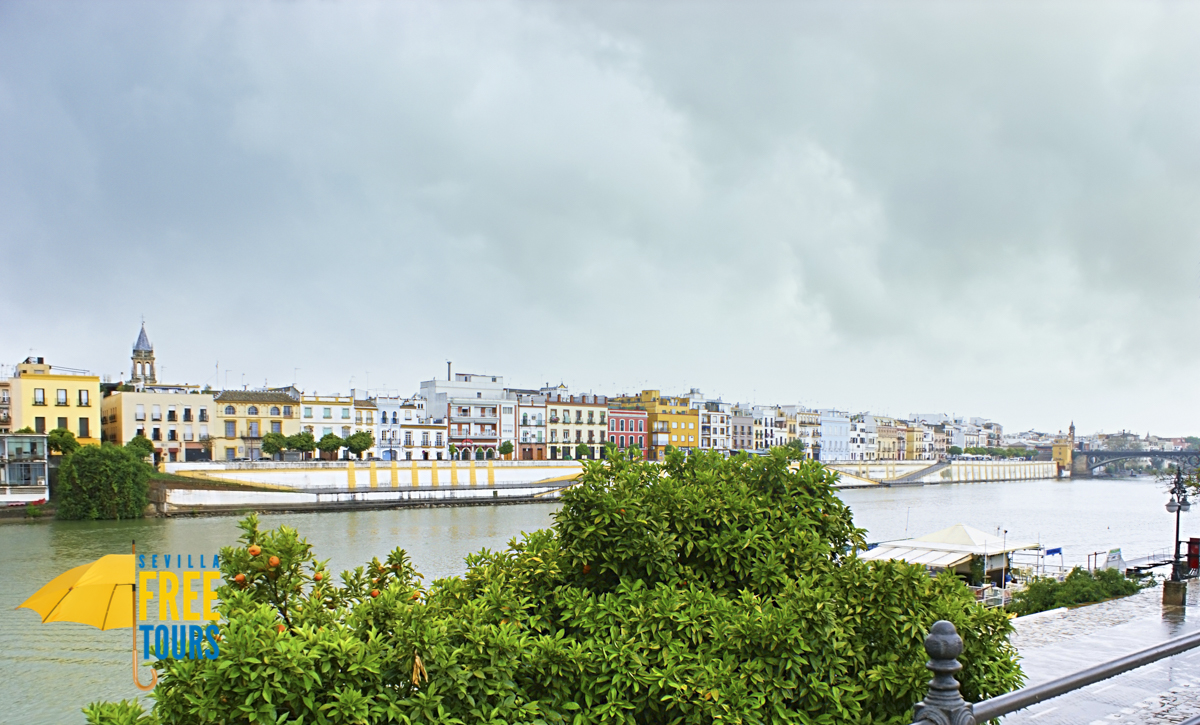Seville is increasingly equating to a large modern city, with faster pace of life, 21st century monuments and large chains of international establishments everywhere. Despite this change in the morphology and way of living of Seville, we always find corners that combine past, present and future, timeless streets where the essence of the city of Seville is breathed.
1.Sierpes Street.
This street Sierpes is one of the Sevillian emblems, says a song "I do not care to sing in Sierpes that in the Plaza Nueva ...". Sierpes is a street full of shops and bars, although its dimensions are not very large, located in the heart of the historic center of Seville.
Its name until the fifteenth century was Calle Espaderos, due to the large number of sword shops that were located here. And then his name was changed to Calle de la Sierpe. There are several reasons about this change of name, and we are going to tell you the favorites of the Sevillians.
In the first place, it is believed that since the street is not straight but "snakes", it was called Sierpe because walking in this corner was like following the curves of a snake made street.
Another version tells us that the Cross of the Locksmith, located on this street until the nineteenth century, gives the name to this road because at the base of the sculpture you can see 8 snakes or dragons.
But of course, Seville is a city of legends, and this street is not free of them. It is said that in the fifteenth century many children began to disappear in the formerly called Calle Espaderos. An inmate who had fled the prison said he knew who the murderer was, whose name he would give in exchange for being free and not fugitive as he has been until now. Once his freedom was obtained, he took the commander and a group of armed men to the basement of Seville and found the culprit dead, surrounded by multiple corpses of children. The astonishment of those who saw it was huge: the child eater was a snake the size of a basilisk. They exposed the lifeless body of the animal for a time, giving it the name of La Sierpe to the old Calle Espaderos.
2.Betis Street.
There is no Sevillian who has not stopped in the Calle Betis, especially in the summer when the sweltering heat of the Andalusian capital is alleviated by the river breeze that the Guadalquivir offers as a present to the terraces of this street.
Full of tapas bars and bars to spend a pleasant night, the unique beauty of this place located on the other side of the river between the bridges of San Telmo and Triana, between Plaza de Cuba and Plaza del Altozano, is completed with views of the Sevillian historical center.
While you enjoy a snack, you can enjoy the views of the Plaza de España Towers, the Torre del Oro, the La Maestranza Theater, the highest part of the Giralda and the Plaza de Toros.
And of course, the name Betis Street has nothing to do with the football team but with the Guadalquivir River, which in Roman times was called Betis or Baetis.
3.Avenue of the Constitution.
The Avenue of the Constitution today connects Plaza Nueva with Puerta de Jerez, and walking through it we can see some of the most impressive buildings in Seville.
In Roman times, this avenue was outside the protective city wall and on one side of it flowed an arm of the Guadalquivir River that came from the Alameda de Hércules.
Its current appearance takes it at the beginning of the 20th century, when buildings of a special beauty will be built on the occasion of the Ibero-American Exposition.
Among these new buildings it is worth mentioning the one facing the Banco de España, a neomudéjar construction by José Espiau Muñoz made for the Adriatic Insurance Company.
The same Bank of Spain is another one of the impressive monuments, as well as sticking to Puerta de Jerez we see the old Teatro Coliseo, a spectacular regionalist building where even today you can see what was once the box office.
But of course, not all the buildings that you see on this avenue are from the 20th century, also finding here the main façade of Santa María de la Sede which is the largest Gothic Cathedral in the world and the entrance of the Archivo General de Indias. These two buildings can be visited today and then we inform you of the visiting hours and prices.
Regarding the Cathedral of Seville, it is open to the public with the following schedule:
Monday from 11.00 to 15.30
Tuesday to Saturday from 11.00 a.m. to 5 p.m.
Sundays from 2:30 p.m. to 6 p.m.
The general admission price for the Cathedral of Seville is € 9 and the reduced entrance fee for pensioners and students under 25 is € 4. Admission is free for Sevillians
And of course, the Cathedral also offers a schedule for completely free visits, namely, Mondays from 16.30 to 18.00.
If you do not want to wait in line, you can buy the tickets online from the website of the Cathedral of Seville or buy the ticket at the same price in the Church of El Salvador, just 5 minutes from the Giralda.
Regarding the Archivo General de Indias, the visit is free and free, being the hours from Tuesday to Saturday from 9.30 to 17.00 and Sundays and holidays from 10.00 to 14.00.
This is only the first part of some important streets of Seville, look for the following article to find out everything and, of course, remember that Sevilla Free Tours offers guided tours by historians who will tell you all the secrets of Seville. We are the yellow umbrella guides and we start every day at 10.00 in Plaza Nueva.




